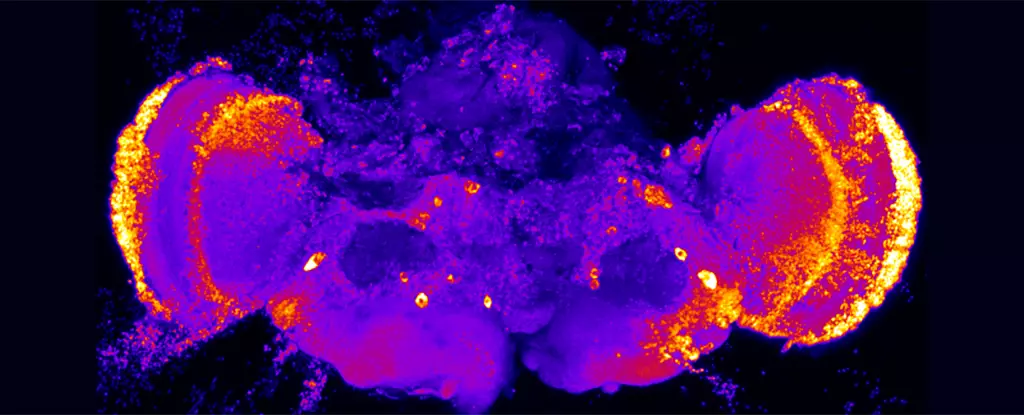A recent study conducted by researchers from Pennsylvania State University suggests that proteins found on the surface of animal cells and in between them could potentially be targeted for drug development to stop Alzheimer’s disease in its earliest stages. These proteins, known as heparan sulfate-modified proteoglycans (HSPGs), have been previously linked to neurodegenerative diseases, prompting further investigation by the US research team.
The study focused on the involvement of HSPGs in regulating cell growth, cell interaction with the environment, and the critical cell repair process known as autophagy. Disruptions in autophagy have been observed in certain types of dementia, making the study of HSPGs essential in understanding the underlying mechanisms of Alzheimer’s disease progression.
Molecular biologist Scott Selleck emphasizes the importance of targeting the earliest cellular deficits in Alzheimer’s disease. By modifying the function of HSPGs in genetically modified fruit flies, mouse brain cells, and human cell-derived tissue, the researchers were able to reverse some of the dementia-related damage. This reversal resulted in improved cell repair mechanisms and halted neuron death, offering a potential avenue for developing novel Alzheimer’s treatments.
While this study is still in its early stages, the promising results suggest that HSPGs could play a significant role in different stages of Alzheimer’s disease progression. Further research is needed to fully understand the complex interactions involving HSPGs and develop targeted drugs that can effectively block neurodegeneration in humans. With more than 55 million people worldwide living with dementia, the need for innovative treatments for Alzheimer’s disease is more pressing than ever.
Alzheimer’s disease, as the most common form of dementia, presents unique challenges in treatment development due to the complex nature of the disease. The uncertainty surrounding the triggers of Alzheimer’s, along with the combined effects of aging brain cells and inherited genetics, complicates the therapeutic landscape. Understanding the earliest cellular changes associated with Alzheimer’s and other neurodegenerative diseases, such as Parkinson’s and amyotrophic lateral sclerosis, is crucial for advancing treatment options.
The study highlighting the potential role of HSPGs in treating Alzheimer’s disease offers a glimmer of hope in the search for effective therapies. By targeting key cellular processes involving HSPGs, researchers may unlock new possibilities for halting neurodegeneration and improving outcomes for patients with Alzheimer’s. Continued research into the intricate mechanisms underlying Alzheimer’s disease is essential for developing breakthrough treatments that address the root causes of this debilitating condition.


Leave a Reply